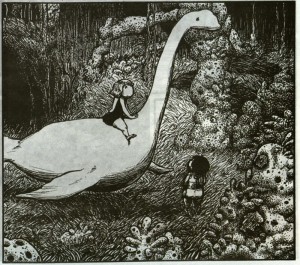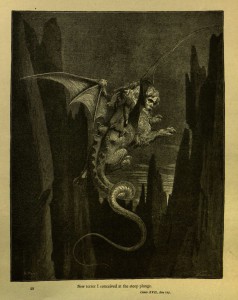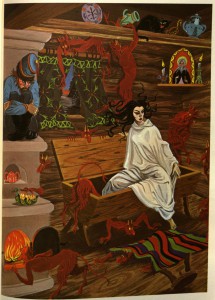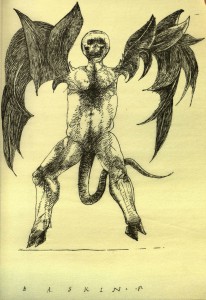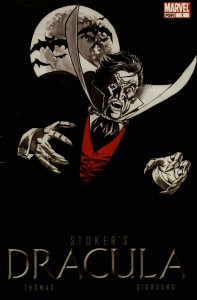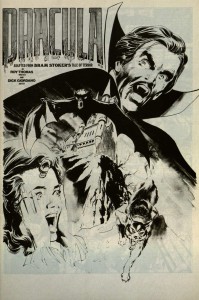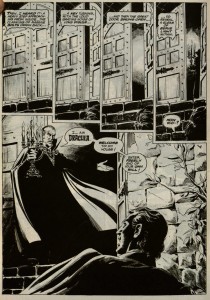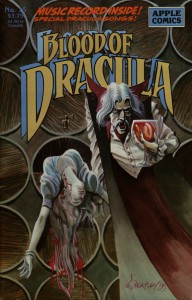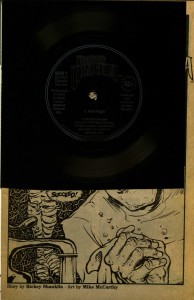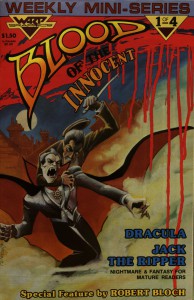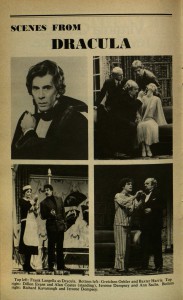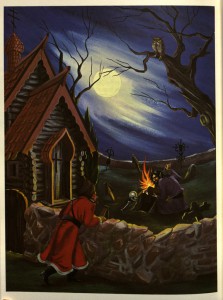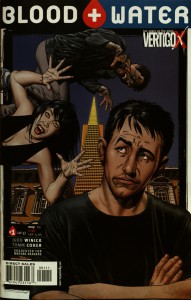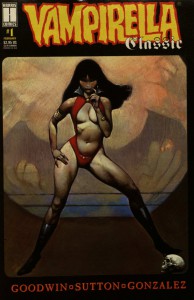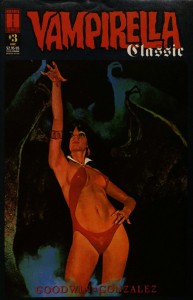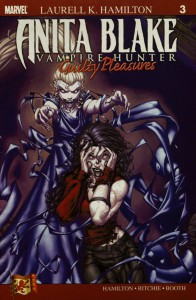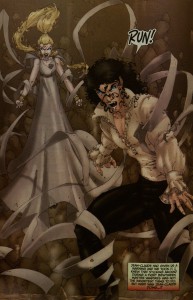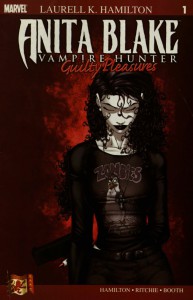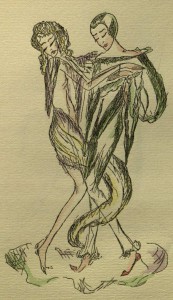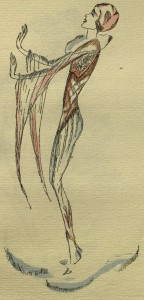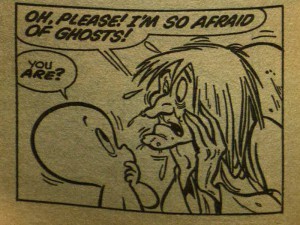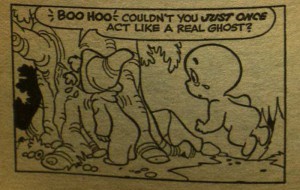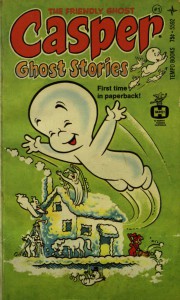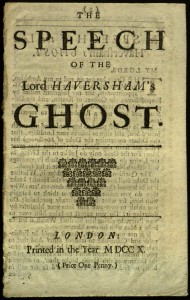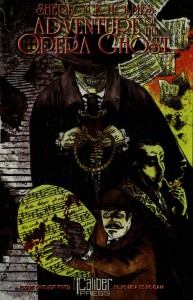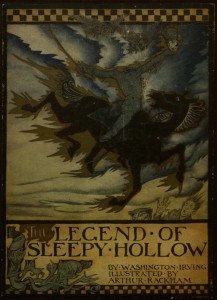Videos from “Dodging the Memory Hole: Saving Born-digital News Content,” held at RJI on Nov. 10–11, 2014.
Read more at the Reynolds Journalism Institute blog: Videos from Dodging the Memory Hole: Saving Born-digital News Content
Super Admin
Nessie
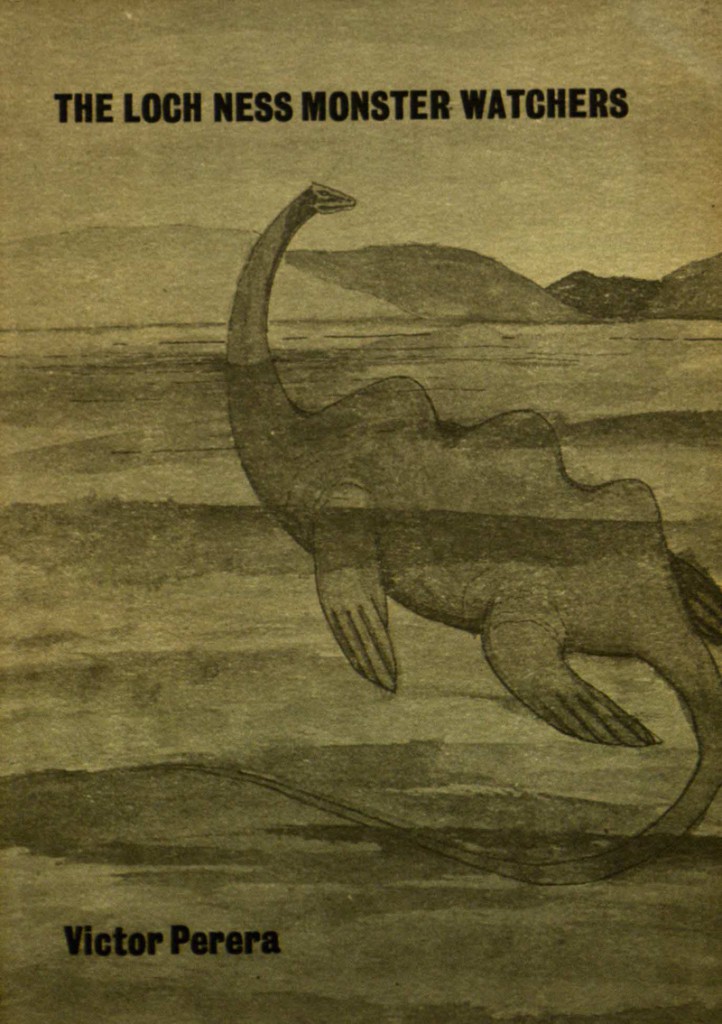
The Loch Ness Monster (or Nessie for short) is one of the most elusive cryptids in modern folklore. In fact, the Loch Ness monster is so elusive, we have only one confirmed sighting on our shelves here in Special Collections. It comes in the form of The Loch Ness Monster Watchers, a 1974 essay by Victor Perera about an expedition he and a collegue took to Loch Ness in Scotland to try to spot Nessie for themselves.
Many theories about the Loch Ness Monster exist in modern legends. One of the most common theories surrounding the Loch Ness Monster is that Nessie is some form of plesiosaur, whose line has somehow survived into modern times within the loch. This image from Robert McCann's short comic "Ocean Blues", featured in Disappointing Circus, shows such a creature. You can certainly see the family resemblance.
Whether or not you believe in Nessie or think it's all just a hoax, the legend continues to be a huge draw for cryptozoologists, adventurers, and the simply curious, all hoping to catch a glimpse of the mysterious creature. If you can't afford the trip to Scotland to seek out Nessie for yourself, come see us at Special Collections, where you can read all about one such a trip and decide for yourself – is the Loch Ness Monster real or just wishful thinking?
Demons
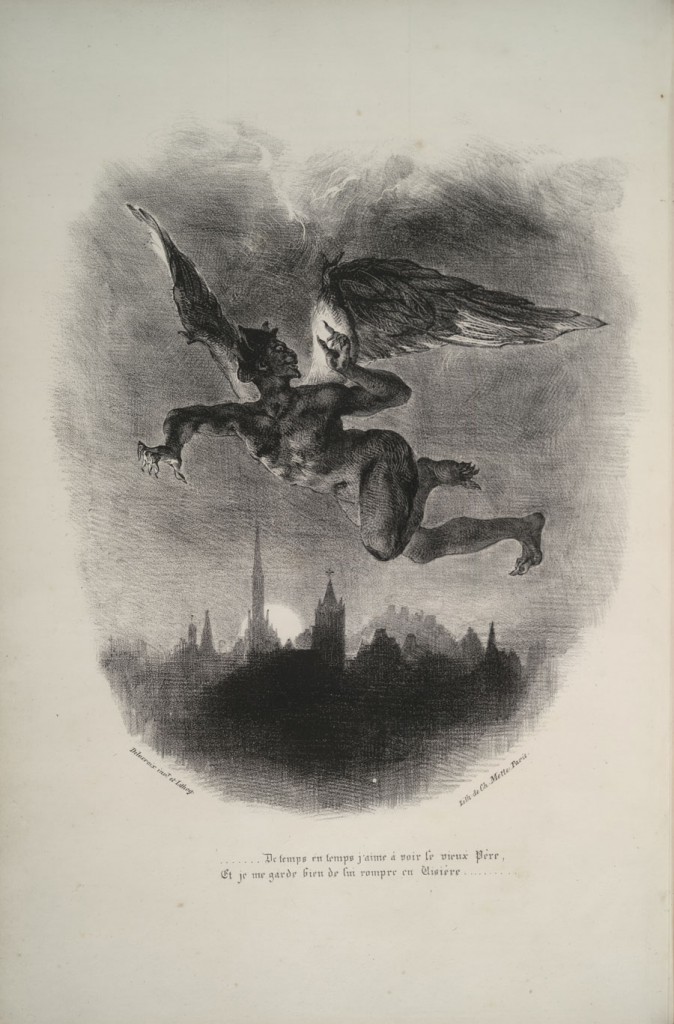
To finish out October, here's an extra special Halloween edition of Fantastic Beasts and Where to Find Them in Special Collections. Today's featured beast is the demon, which is usually defined as an evil spirit or fiend. Nearly every religion has a form of demons that populate whatever version of Hell that particular religion believes in, often trying to influence the people of our world into committing evil acts and causing general chaos. Mephistopheles (pictured above) is one of the more well-known demons and is the one that Faust sells his soul to in the legend of Faustus, recorded most famously by Goethe.
In other classic literature, this edition of Dante's Inferno illustrated by Gustave Dore beautifully shows some of the residents of Hell that Dante and Virgil encounter on their journey through the nine circles of Hell.
This image depicts a scene from the Russian folk tale The Soldier's Midnight Watch, in which a soldier hides on top of the stove while an undead witch summons a crowd of small demons to search him out.
In more modern media, demons have taken on other roles as well, such as in the comic Fray by Joss Whedon, in which the demon Urkonn plays trainer to a futuristic vampire slayer named Melaka Fray.
A more light-hearted take on a demon occurs in The Demon of the Eiffel Tower, an English translation of a French comic in which Adele Blanc-Sec solves mysteries and has grand adventures in a fantasy version of the 1900s. (Spoiler Alert: in true Scooby-Doo style, the demon is eventually revealed to be a woman with a nefarious plot in a costume.)
Switching from comics to poetry, the above image is from Arthur Rimbaud's collection of poems entitled A Season in Hell. With several photographs like this by Robert Mapplethorpe, this edition of Rimbaud's poetry certainly takes an added turn for the creepy.
Speaking of creepy, these terrifying creatures are from Leonard Baskin's work Demons, Imps, and Fiends. The rest of the book is filled with drawings of demons you definitely wouldn't want to meet on the street at night, much less enter into any form of agreement with.
Happy Halloween everyone! If you need help getting into the spirit of the holiday, come see us in Special Collections. Our stacks are haunted by books with all kinds of creatures guaranteed to help.
Vampires Suck
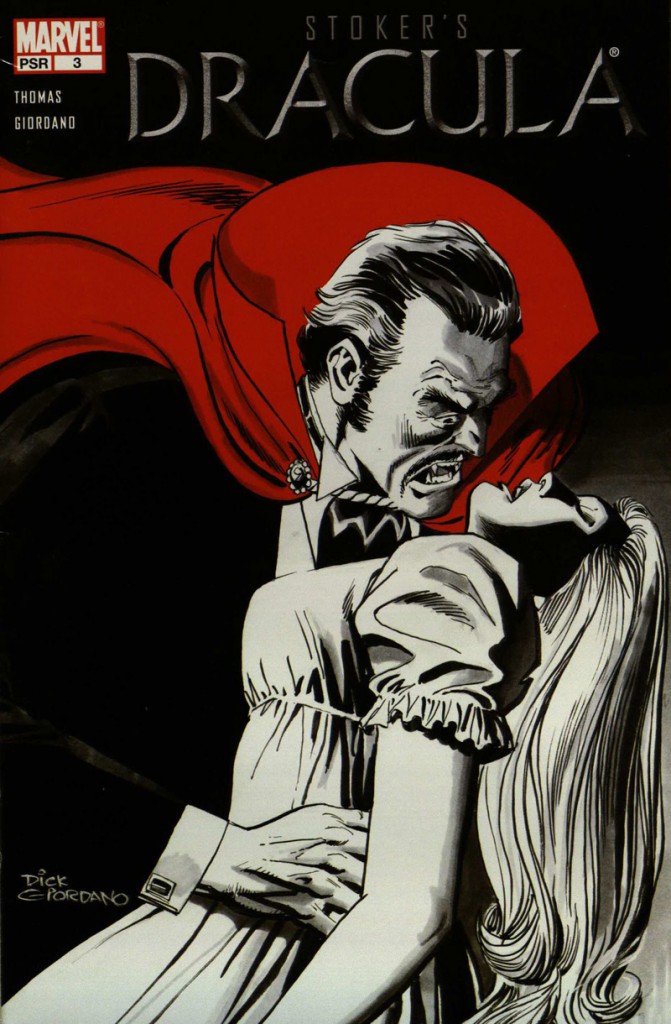
(Your blood, that is.) How does one even begin to write about vampires with any sort of completeness? Every culture's got one – some version of a creature that rises from the dead and preys on the life force of the living (either the blood or something more abstract, such as energy or the soul) to sustain itself. Reflecting this, Dracula and his brethren abound on the shelves of Special Collections – particularly our comics collection where the dramatic nature of the vampire lends itself perfectly to a graphic medium.
While vampires have been around for ages, it was Bram Stoker's 1897 novel Dracula that made them much more prevalent in literature and popular culture. In more modern times, vampires' popularity has spiked again with television series such as Buffy the Vampire Slayer and bestselling book series like Anne Rice's The Vampire Chronicles, Stephanie Meyer's Twilight series, and the Sookie Stackhouse Novels by Charlene Harris.
Let's start with Dracula then, shall we?
This 2004 adaption of Stoker's Dracula presents the comic in a dramatic black and white contrast that plays up the drama of the story.
Another series featuring the Count is Apple Comics's Blood of Dracula, where each issue contains an installment of three different stories featuring Dracula in his own time, in the future, and anywhere in between. This issue even comes with a record of songs composed to supplement the stories!
Not to be outdone, Warp Graphics (which later turned over most of its titles to Apple Comics) pitted Dracula against Jack the Ripper in its 1986 mini-series Blood of the Innocent.
In addition to its large spread in comics, the story of Dracula has also been taken to the stage over the years, as seen in these scenes from a 1978 production of Dracula starring Frank Langella as the titular feind and famous illustrator Edward Gorey designing the scenery and costumes.
Stoker wasn't the only one to write about vampires, though. Folk stories teemed with different versions of the vampire. This image from a book of Russian folk tales shows the warlock from the tale "The Soldier and The Vampire" who comes back from the dead each night to terrorize a town by cursing a newlywed couple and drawing their blood until he is outwitted and killed by a clever soldier.
In modern vampire culture, many vampires choose to live among us and forgo the drinking of human blood for that of animals. Two such "vegetarian" vampires are main characters in Vertigo's series Blood + Water. Adam Heller, a man slowly dying of AIDS finds out his friends are actually vampires when they turn him into one to cure him and save his life.
Men aren't the only ones to play large roles in vampire stories. Vampirella, the vampire superheroine from the planet Drakulon, fights evil vampires on our world in an effort to save her own. She appears in a number of comic series and a direct to video movie.
Laurell K. Hamilton's Anita Blake Vampire Hunter book series was adapted by Marvel in 2006. The leading lady, Anita Blake, lives and works in St. Louis, Missouri as a professional zombie raiser, vampire hunter, and consultant for the police's supernatural department.
Including the scores of other stories both modern and old as Dracula himself, it's clear that no matter what way you slice it, vampires have a powerful prescence in cultures throughout the world. So this Halloween if you're finding yourself going batty for vampires, come see us at Special Collections. We've got plenty of vampire stories you can really sink your teeth into.
‘Losing a piece of you’: The fragility of digital news archives
In this video, Tom Warhover, executive editor for innovation at the Columbia Missourian, discussed the devastating 2002 loss of more than 15 years worth of content at the Missourian. Archival specialists and journalists will address this problem for the news industry at “Dodging the Memory Hole: Saving Born-digital News Content.”
Read more at the Reynolds Journalism Institute blog: ‘Losing a piece of you’: The fragility of digital news archives
Minus proper archives, news outlets risk losing years of backstories forever
Print stories can be lost, but digital stories last forever, captured for eternity in some nebulous internet ether or on a hard drive in a desk drawer. At least, that?s the vague theory assumed by many producers and consumers of digital news. Once something is posted or backed up, it never really disappears?and if that?s true, archiving digital work seems less urgent. That line of thinking is exactly why so many news organizations risk losing years? worth of stories. As we move deeper into the digital era, we?ve recognized the need to preserve and digitize print content, but we?re still in the early stages of understanding how we safely archive our digital news.
Read more at the Reynolds Journalism Institute blog: Minus proper archives, news outlets risk losing years of backstories forever
Engineering Library Study Rooms
Looking for a quiet place to study? The Engineering Library has nine study rooms for group use. Each room has a white board, and dry erase markers are available for checkout at the front desk. Reserve a study room online for two hours at a time.
Puppen-Hand Colored Plates
Digital archives not as complete or long-lasting as they should be — or could be
Today, digital archives and ?computer-assisted journalism? are commonplace. Almost all stories, photos, videos and related news assets are now created digitally ? so one might think electronic archives are universal. But it?s not necessarily so. Digital archives may not be as complete or long-lasting as they could/should be.
Read more at the Reynolds Journalism Institute blog: Digital archives not as complete or long-lasting as they should be — or could be
Ghosts, Friendly and Otherwise
While sometimes our stacks can certainly feel like they're haunted, the only ghosts we know live here are the ones in our books! From Casper the Friendly Ghost to the Headless Horseman, our shelves are inhabited by a large variety of spirits. We even have books claiming to be written by ghosts, such as the Ghost Epigrams of Oscar Wilde, and collections of ghost stories spanning the years.
Automatic writing allows a person to channel the supernatural to produce written words without consciously writing. In this case, allowing the figure of Lazar to write pages worth of witty epigrams from the spirit of Oscar Wilde.
In this pamphlet, a speech is recorded from the ghost of Lord Haversham, who was so disturbed by some of the carrying-ons of the Parliment that he returned as a ghost after his death to give this speech to the House of Lords in 1710.
Even Holmes and Watson join the fray in the fight against evil spirits in these crossover comics that pit the famous consulting detective and his biographer against the opera ghost, or the Phantom of the Opera.
One of the more well-known ghosts in American literature is that of the Headless Horseman from Washington Irving's short story "The Legend of Sleepy Hollow." Also a terrifying figure in other European folktales, a common theme among all depictions is that, where this spirit shows up, death usually follows.
So if these books make you want to take up ghosthunting this October, you know who to call. (Hint: it's us, Special Collections!)
